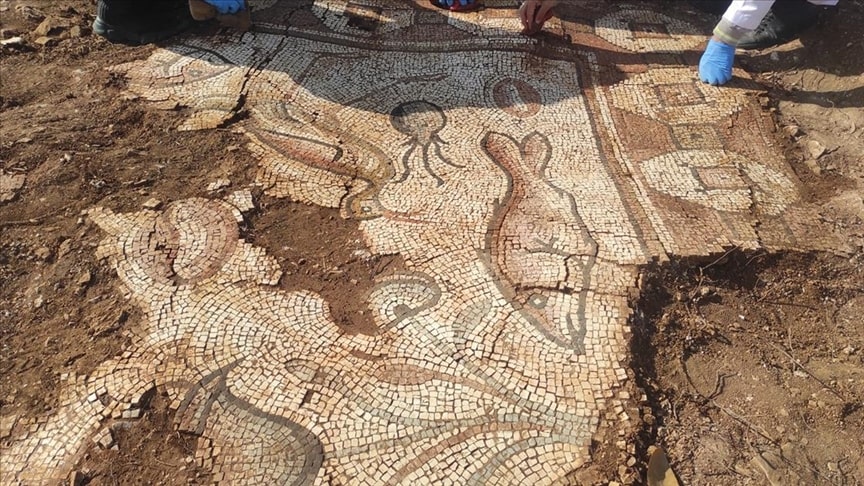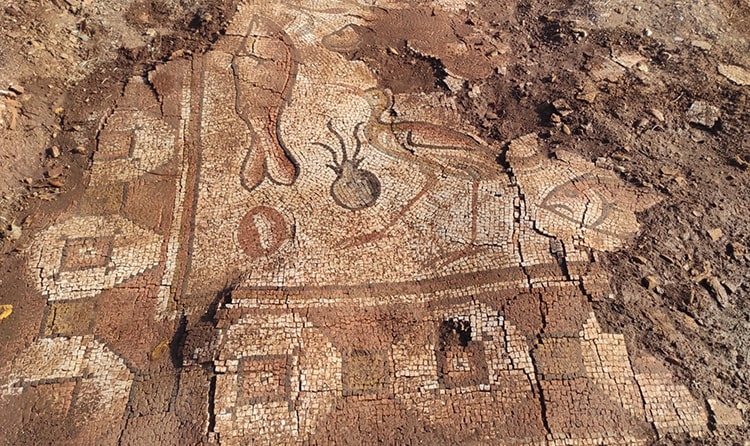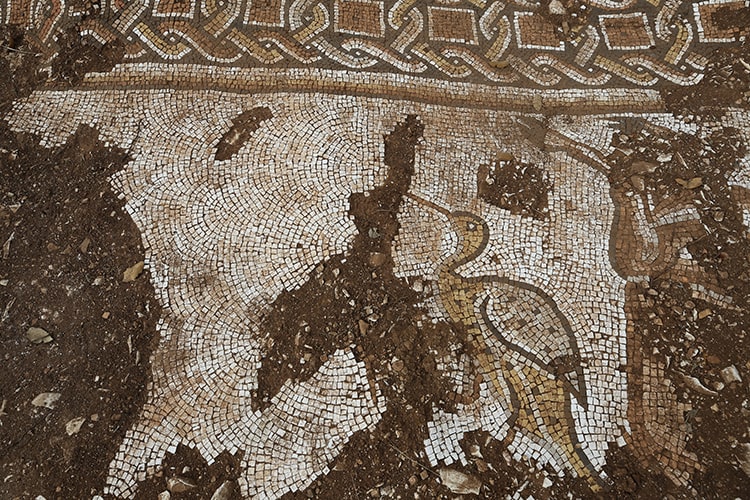Roman mosaics were found during rescue excavation in southeast Turkey

Archaeologists discovered mosaics believed to be from the Roman era during a rescue excavation undertaken in a rural expanse in the Kızıltepe district of Mardin in southeastern Türkiye.
In the countryside of Uzunkaya Neighbourhood, which is about 30 kilometers away from the district center, officials investigated the area known as Kela Hanma (Lady’s Castle) upon a report of illegal excavation.
During the investigations, it was determined that the architectural texture of the area was destroyed and there were many illegal excavation pits in the area.
Following reports of illicit excavations and the destruction of the architectural fabric in the area, researchers delved into the site to uncover ancient treasures hidden beneath the ground.
A rescue excavation was started on 2 October in the said area under the chairmanship of Mardin Museum Director Abdulgani Tarkan, with the participation of expert archaeologist and art historian Volkan Bağlayıcı, Museum Specialist Archaeologist Mehmet Şan and 6 workers, and teams from Diyarbakır Restoration and Conservation Regional Laboratory Directorate.

The excavation revealed mosaic floor tiles belonging to a Villa Rustica, a rural settlement enclosed by walls, comprising a central structure along with smaller auxiliary buildings distributed around it.
The mosaic floor, measuring approximately 100 square meters, exhibited intricate designs depicting fish scales, triangles, hexagons, octagons, arch formations, trees, waterfowl, octopuses, fish, mussels, seals, and aquatic plant imagery.
Director Abdulgani Tarkan highlighted the significance of the findings, emphasizing that this Roman settlement in the forested area between Kızıltepe and Artuklu districts is not just a rural villa; it encompasses diverse architectural remnants, including living quarters and a necropolis dating back to the fifth to seventh centuries.

“These mosaics, adorned with animal figures and rare sea creatures like octopuses and various fish species, are distinctive in this region.
Our priority is to preserve these historical relics to prevent further deterioration,” Tarkan emphasized.
Plans are in the works to carefully remove and display these unique mosaic artifacts at the museum, highlighting this new chapter in Mardin’s rich historical narrative.